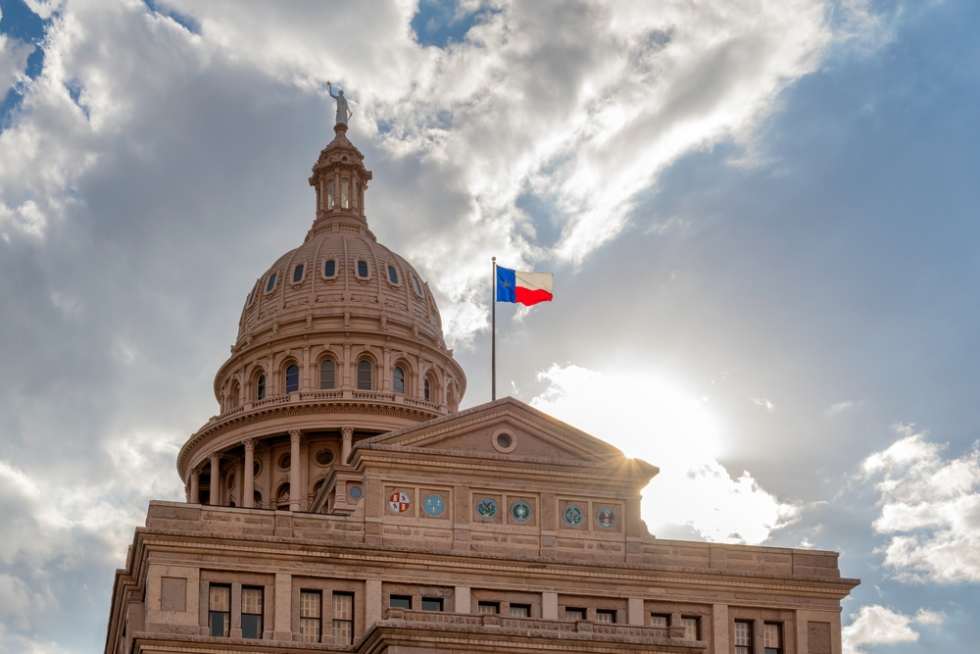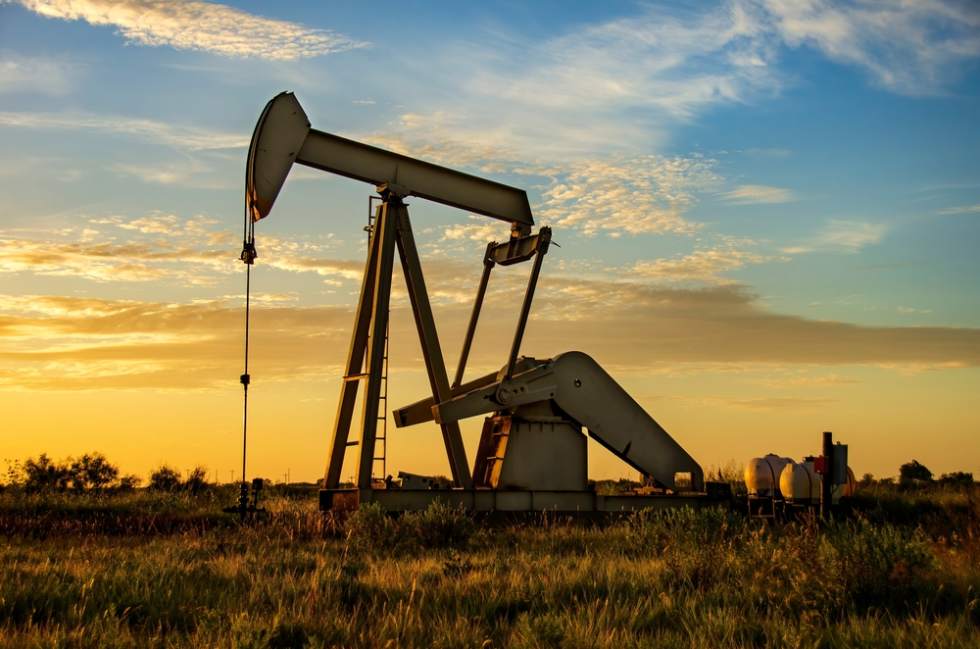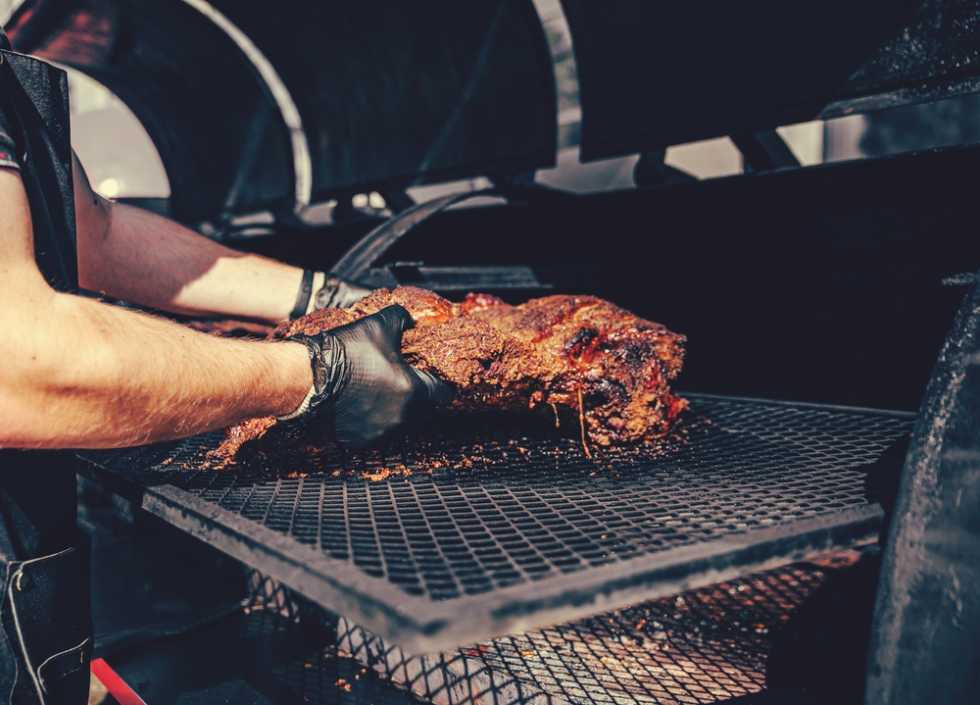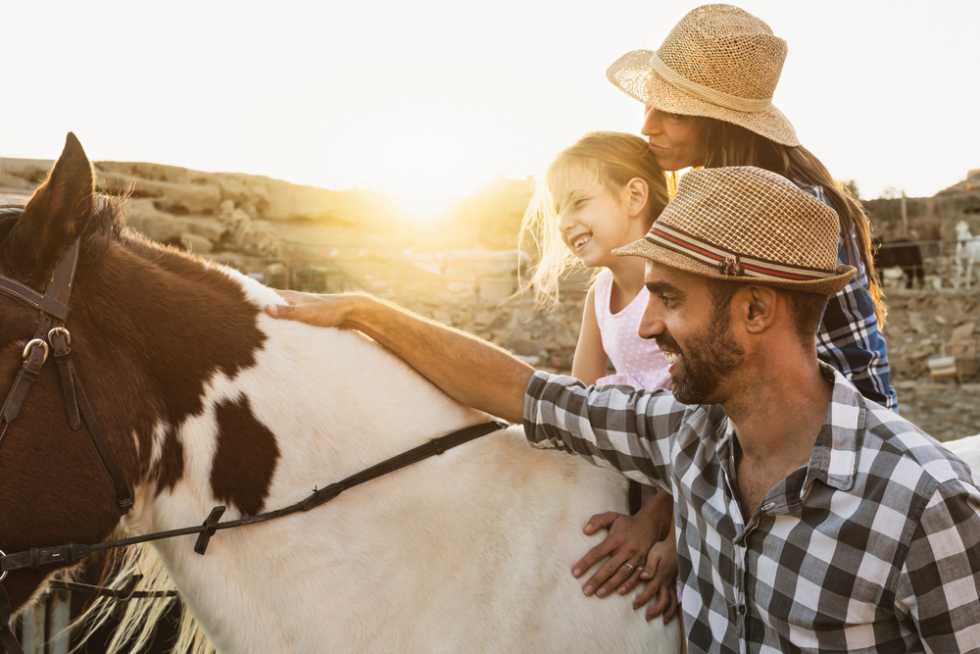Modera Trailhead
- 164 units available
- 1 bed • 2 bed • 3 bed
- Amenities
In unit laundry, Wine room, Patio / balcony, Granite counters, Dishwasher, Pet friendly + more

Texas has long promised big space, big savings, and big personality. It’s a state where you can buy a four-bedroom home for the price of a closet in New York—and still have money left for brisket. From booming job markets to BBQ joints and wide-open highways, Texas sells freedom and opportunity by the acre.
But it’s not all cowboy boots and cash flow. Scorching summers, limited public transit, and property taxes that pack a punch are all part of the trade-off. So, is life in the Lone Star State right for you? We’re breaking down the key pros and cons, from housing affordability to cultural perks, to help you figure out if Texas is your next move or just your next vacation.
Methodology: We used internal Apartment List data and cross-referenced it with housing trends from Rent.com and Apartments.com to give you the most accurate snapshot of Texas living as of September 2025. Crime insights are sourced from CrimeGrade.org and Weichert.
| Category | Texas 2025 Snapshot |
|---|---|
| Population | 29,145,505 |
| Average One-Bedroom Rent Price | $1,258 |
| Average Two-Bedroom Rent Price | $1,562 |
| Year-Over-Year Rent Change | -2.6% |
| Median Household Income | $75,780 |
| Largest Cities in Texas | The largest cities in Texas include Houston (pop. 2,304,580), San Antonio (pop. 1,434,625), Dallas (pop. 1,304,379), and Austin (pop. 961,855) |

If you live in East Texas, West Texas, or even in smaller metros like Waco or Lubbock, you’ll find people opening doors, saying “How’re you doing?” with a real neighborly vibe. Even in big cities like Houston and Dallas, many locals carry that small‑town politeness. It’s common for strangers to help when you’re lost, coworkers to bring snacks, and for the community to pull together after events like floods or storms.
Public transit outside a few areas (like parts of Houston, Dallas, or the MetroRail in DFW) is limited. In suburbs (e.g. Plano, Katy, Round Rock), commuting without a vehicle is difficult. Bus service and light rail exist, but schedules are less frequent and routes are less flexible the further you get from the city.
Texas delivers long, sunny seasons. In cities like El Paso, you can expect to see around 300 sunny days a year. Winters are mild: Austin summers are scorching, but winters dip only into the 40‑50°F range. It means more time outdoors, more grilling, more hiking, and more life lived outside.

If you think sunny weather is great, Texas summers turn up the heat. In Dallas, Houston, and especially in inland areas like San Angelo or Del Rio, temperatures routinely top 100‑105°F. Add humidity in the east, and it’s a sauna. Air conditioning is essential, and your energy bills will reflect that.
A big financial win: Texas does not tax individual income. That means what you earn is what you pocket. It’s one reason why people with high salaries or multiple income streams often move here.
In rural areas like West Texas and parts of South Texas, access to quality hospitals or specialists can be limited. Some counties have long travel distances to trauma centers or advanced care. Even in cities, certain hospital systems are overwhelmed, and there are physician shortages in specialties.

From oil & gas to tech, healthcare, manufacturing, and logistics, Texas has been adding jobs steadily. Dallas‑Fort Worth, Houston, and Austin are hubs for tech startups, energy firms, and medical device companies. Texas’s GDP is among the highest in the U.S., with over 50 Fortune 500 companies headquartered in the state.
With no state income tax, local governments lean heavily on property taxes. In Texas, the average property tax rate is around 1.47% of a home's assessed value. That can add substantial costs for homeowners, and these expenses can ripple into rents.
Outside of premium neighborhoods in Austin or Houston, housing is relatively affordable. The average home in Texas goes for $304,005.
You can buy or rent much more square footage for less money than in comparable metros in California or the Northeast. Cities like San Antonio, Corpus Christi, or parts of the Dallas suburbs offer large homes or yard space at prices that feel almost luxurious compared to coastal alternatives.
In fast‑growing cities like Austin, Dallas, or Houston, there's a new brewing tension: long‑time locals sometimes view newcomers skeptically. Rapid growth stresses infrastructure, housing, and cultural norms. Traffic gets worse, housing climbs, and sometimes the pace or cost undercuts the “authentic” feel that locals cherish.

Texas is deeply diverse: culturally, ethnically, and economically. In fact, Houston is the second-most diverse city in the United States. San Antonio has deep Hispanic roots, Dallas is a corporate and international hub, and El Paso has strong Mexican heritage. That creates food, culture, festivals, and perspectives that draw people in from all over the world.
Living along the Gulf Coast or in humid East Texas means mosquitoes, fire ants, palmetto bugs, and regular critters. In Houston, especially after heavy rains or flooding, mosquitoes can swarm. For someone used to dry climates, you’ll have to keep screens, repellents, and pest control in mind.
Texans love their state, and it shows, from flags on porches to pride in local culture (like Texas country music, rodeos, high school football). That pride tends to unify people across politics or backgrounds. It gives many Texans a strong sense of identity and place.
Coastal zones like Galveston, Corpus Christi, Houston, and the Upper Gulf Coast are vulnerable. Hurricanes like Harvey (2017) and more recently storms causing flooding in southeast Texas remind us that storms can do major damage, and insurance costs and flood risk are very real when living near the coast.

This isn’t a stereotype—it’s serious craftsmanship. Central Texas (Lockhart, Austin), East Texas, and the Hill Country are BBQ meccas. Brisket, ribs, sausage smoked with oak or pecan: people come from far and wide for spots like Franklin Barbecue in Austin, Kreuz Market in Lockhart, or Louie Mueller in Taylor.
While many schools are great, Texas has a wide spread. According to the 2025 TEA (Texas Education Agency) A‑F ratings, 85% of campuses are A‑C, but about 14% of campuses still get D or F grades. That means a nontrivial chance that your neighborhood school could be underperforming. Texas also ranks 40th in education in the nation.
Love sports? Texas has it. The Dallas Cowboys, Houston Texans, San Antonio Spurs, Texas Rangers, Houston Astros, and MLS teams like Houston Dynamo and FC Dallas. Big venues, intense fans, and year‑round energy: whether it’s NFL, MLB, NBA, or college football, the sports culture is baked in.
During extreme weather, some Texas areas face rolling blackouts or power strain. ERCOT (Electric Reliability Council of Texas) has been under scrutiny after outages during the 2021 winter storm and summer heat spikes. In areas with older infrastructure, power can be unreliable under stress.
Yes, Texas can be a great place to live if what you care about lines up with what Texas offers. You’re getting more space for your money, lower taxes (no state income tax, remember?), and strong job markets in places like Austin, Dallas‑Fort Worth, and Houston. Outdoor lifestyle is a plus: big skies, BBQ, football, rodeos, and more room to breathe.
Renters can target sleek new apartments in downtown Austin, more affordable suburban options in places like Plano or Katy, or quieter towns like Buda or San Marcos.
Still, there are trade‑offs: summers are scorching hot, car dependency is necessary in the urban and suburban sprawl, and some metros face infrastructure growing pains. If you value affordability, job opportunities, and a bigger slice of land, Texas could very well be the place.
| Apartment Size | Average Square Footage | Average Rent in Texas | U.S. Average Rent |
|---|---|---|---|
| One-Bedroom | ~750 sq. ft. | $1,258 | $1,755 |
| Two-Bedroom | ~1,100 sq. ft. | $2,562 | $2,194 |
The thing about Texas is that each city has its own rhythm. The state stretches wide, so your lifestyle can shift as easily as the scenery, from high-rise city life to peace and serenity in Hill Country.
Each city brings its own vibe:
Sure, the summers are brutal, and you’ll probably need a car. But for renters looking for room to grow, Texas delivers serious value without skimping on lifestyle.
Texas culture is equal parts brisket smoke and business pitches, rodeo nights and startup grind, Friday night lights and Tejano beats. It’s loud, proud, welcoming, and wildly varied, shaped by deep roots, unique ideas, and a state that never does anything halfway.
Yes, you’ve got the big icons: the Alamo in San Antonio, the State Fair in Dallas, the Houston Livestock Show and Rodeo, and the live music pulse of Austin’s Sixth Street. But culture here is more than cowboy hats and college football. It’s catching a Selena tribute concert at Fiesta San Antonio, watching a muralist work in real time in Deep Ellum, or grabbing smoked turkey and a Topo Chico at a picnic table behind a gas station in Lockhart.
Texas food is culture with a capital C. You’ll find Vietnamese crawfish boils in Houston’s Midtown, handmade tortillas in McAllen, and brisket tacos topped with queso fresco in East Austin. Barbecue joints like Snow’s and Truth BBQ have waitlists for a reason, and taquerias, kolache bakeries, and soul food diners keep locals loyal.
Sports are religion here. Whether it’s Cowboys Sundays, high school football under the lights in Odessa, or packed stadiums for the Astros, Spurs, or Mavericks, Texans show up loud. The vibe is just as electric at UT game days in Austin or at an HBCU band showdown in Prairie View.
Festivals span everything from SXSW and ACL in Austin to Juneteenth parades in Galveston and Día de los Muertos celebrations in San Antonio’s West Side. Even smaller towns like Marfa and Denton punch above their weight with thriving art, music, and maker scenes. Creativity isn’t a trend in Texas. It’s stitched into the identity.
From cowboy poetry in Alpine to Bollywood dance parties in Irving, from two-stepping in Fort Worth’s Stockyards to skate crews in Corpus Christi, Texas culture isn’t one thing. It’s a living mixtape, shaped by the people who show up, speak up, and make it home.
Texas is noticeably more affordable than many states. Its cost of living score is 94.2, meaning living in Texas overall is about 5.8% cheaper than the U.S. average. That estimate takes into account housing, groceries, transportation, health care, taxes, and other essentials.
| Cost of Living | Texas | U.S. Average | |
|---|---|---|---|
| Overall | 94.2 | 100.0 | |
| Grocery | 93.7 | 100.0 | |
| Health | 100.0 | 100.0 | |
| Housing | 83.5 | 100.0 | |
| Utilities | 99.2 | 100.0 | |
| Transportation | 103.3 | 100.0 | |
| Miscellaneous | 83.2 | 100.0 |
Texas is seeing steady job growth across many sectors, though performance varies by metro and industry. As of July 2025, the statewide unemployment rate was about 4.0%, with over 15.85 million people in the civilian labor force. Texas has added roughly 232,500 nonfarm jobs over the past year, outpacing the national job‑growth rate.
In Houston–The Woodlands–Sugar Land, nonfarm employment has held relatively flat year‑over‑year. Although overall employment growth is modest there, strong gains have come from Private Education & Health Services, Trade, Transportation, and Utilities, and Professional & Business Services.
Meanwhile, metros like Austin‑Round Rock‑San Marcos are generating lower unemployment (around 3.5%) and high growth in tech, project development, and education sectors. Industries like Information and Professional Services are showing expansion.
Smaller Texas metro areas also show divergent trends: Midland has one of the lowest unemployment rates in the state (around 3.0%) thanks to energy and oil services; by contrast, regions like McAllen‑Edinburg‑Mission still have higher unemployment (~6–7% in some recent reports).
Texas averages a D+ safety grade from CrimeGrade.org, placing it in about the 29th percentile for safety among U.S. states, meaning it’s safer than only ~29% of states but less safe than ~71%. The typical yearly crime rate is ~37.68 per 1,000 residents.
Here’s how some major and mid‑size cities compare:
Overall, safety in Texas is not uniform. Neighborhoods, blocks, and city sectors matter a lot. For example, you might feel relatively safe in northwest Houston, safer suburbs of Dallas or Austin, or smaller towns, while central urban districts face higher risks for property and violent crime.
If you’re considering moving here, it’s smart to drill down to city‑data.
Texas schools run the full spectrum, from elite private high schools to top public research universities, and everything in between. Where you live often determines how good your school options are. Suburbs around Dallas, Houston, Austin, and San Antonio tend to have more rigor, more resources, and stronger reputations. Rural areas can lag in teacher availability, extracurriculars, or specialty programs, but there are standout schools everywhere.
| School/University | Type & Location | Niche Grade and Highlight |
|---|---|---|
| St. Mark’s School of Texas | Private PK-12 | Rated A+ by Niche; known for rigorous academics, small class sizes (~9:1 student/teacher ratio) and strong STEM / liberal arts preparation |
| The Village School (Houston) | Private K-12 | Grade: A+ by Niche; strong community feel, global student body, college‑prep focus. |
| School of Science & Engineering (Dallas ISD) | Public High School, 9‑12 | Among top public HSs in Texas; rated A+ for STEM opportunities, challenging coursework, college readiness programs. |
| Liberal Arts & Science Academy (Austin ISD) | Public High School, 9‑12 | Another A+ STEM‑focused public high school; highly competitive, well respected; students often go on to top universities. |
| Rice University (Houston) | Private University | Frequently ranked among the top universities in the U.S.; strong in research, low student debt, high post–grad outcomes. |
| University of Texas at Austin (Austin) | Public University | One of Texas’s flagship public research institutions; repeatedly listed among top public U.S. universities; competitive, diverse, strong in tech, engineering, and liberal arts. |
| Texas A&M University (College Station) | Public University | Ranks very high in research activity; also strong in engineering, agriculture, education; large student population and robust alumni network. |
| UT San Antonio <br> | Public University | Recently merged with UT Health San Antonio; now one of the largest public research universities in Texas, more than 40,000 students, ~$486 million in annual research spending. |

Texas has many winning family‑friendly towns. Here are the top spots you should know—with what makes them stand out:
Here’s how some frequently mentioned Texas cities stack up in average rents (one‑bedroom and two‑bedroom).
| City | Average One-Bedroom Rent | Average Two-Bedroom Rent |
|---|---|---|
| Austin | $1,489 | $1,682 |
| Houston | $1,351 | $1,789 |
| Dallas | $1,527 | $2,190 |
| San Antonio | $1,183 | $1,510 |
| Texas City | $1,228 | $2,119 |
| Buda | $1,323 | $1,690 |
| Georgetown | $1,297 | $1,702 |
| Midland | $1,399 | $1,745 |
| Abilene | $1,098 | $1,462 |
| Odessa | $1,287 | $1,622 |
Texas could be a great fit if you're after warm weather, wide-open spaces, and a strong economy with no state income tax. From tech gigs in Austin to oil and energy roles in Midland, from ranch life to city skylines, this state gives you room to grow, literally and figuratively.
Whether you're eyeing a high-rise in Dallas, a family home in Round Rock, or a rental near the beach in Corpus Christi, there's a corner of Texas to match your lifestyle. Just be ready for the heat, car-dependence, and the occasional grid glitch or storm season.
Still wondering if Texas checks all your boxes? Explore our Renter Life guides to compare cities or take the Apartment List quiz to find your best rental match.
Some of the biggest challenges in Texas include
Texas attracts folks for its lower cost of living compared to coastal states, no state income tax, and growing job markets, especially in tech (Austin), energy (Houston), healthcare, and logistics. There's also cultural appeal: a vibrant music scene, strong local food cultures, big outdoor space, and communities that tend to be welcoming. The affordability of housing in many suburbs or smaller cities relative to national averages is a major draw.
Environmental risks top the list: coastal areas face hurricanes and flooding; central and north Texas get hit by tornadoes; heat and drought are growing problems. Then there are infrastructure risks. Power grid reliability, for example, has been spotty during extreme weather. Healthcare gaps, especially for low‑income or rural residents, are also a serious concern.
It depends heavily on city, family size, and lifestyle, but recent data gives good benchmarks. For example, MIT Living Wage notes that a single adult with no children needs about $45,386/year to live comfortably in many Texas metros. For a family of four, that number rises to around $102463/year to cover housing, food, healthcare, transportation, and other basics.

In unit laundry, Wine room, Patio / balcony, Granite counters, Dishwasher, Pet friendly + more
In unit laundry, Patio / balcony, Granite counters, Hardwood floors, Dishwasher, Pet friendly + more